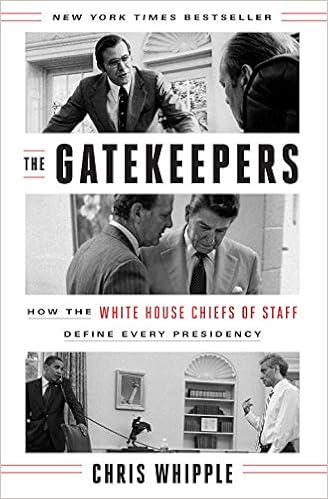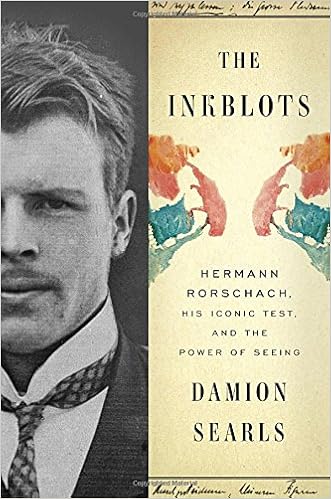Popular Posts
-
Unsportsmanlike Conduct: College Football and the Politics of Rape by Jessica Luther is one of the most thorough and thoughtful books I hav...
-
Magic has always been somewhat fascinating to me. As a child I went through a phase where I was going to be a magician. I got a little magic...
-
Reclaiming Hope: Lessons Learned in the Obama White House About the Future of Faith in America by Michael Wear tells the story of one you...
-
I have some exciting news for you, my few, yet faithful readers. I am pleased to offer my very first book giveaway! The kind folks who handl...
-
Sinners in the Hands of a Loving God: The Scandalous Truth of the Very Good News by Brian Zahnd is a rebuke against what Zahnd considers ...
-
Heart Failure by Richard Mabry is a suspense story with a minor romantic theme. The main characters are Dr. Carrie Markham and Adam Davids...
-
Goliath Must Fall: Winning the Battle Against Your Giants by Louie Giglio is a a strong addition to the library of any believer in Christ. ...
-
As Kingfishers Catch Fire: A Conversation On the Ways of God Formed By the Words of God by Eugene H. Peterson is a collection of sermons pr...
-
Defiant Joy: Taking Hold of Hope, Beauty, and Life in a Hurting World by Stasi Eldredge is a call to fulfill the biblical command of livi...
-
The Gatekeepers: How the White House Chiefs of Staff Define Every Presidency by Chris Whipple examines the modern chief of staff and how ev...
Blogger templates
Blogger news
Blogroll
About
Blog Archive
About Me
Powered by Blogger.
Check out my personal blog!
Thursday, May 25, 2017
 The Gatekeepers: How the White House Chiefs of Staff Define Every Presidency by Chris Whipple examines the modern chief of staff and how every presidency since Nixon's has been shaped by the position. Good or bad, the chiefs of staff have been one of the most influential factors in the legacy of each presidency in the modern era.
The Gatekeepers: How the White House Chiefs of Staff Define Every Presidency by Chris Whipple examines the modern chief of staff and how every presidency since Nixon's has been shaped by the position. Good or bad, the chiefs of staff have been one of the most influential factors in the legacy of each presidency in the modern era.Whipple uses mainly primary source material to tell the magnificent tale of the modern chief of staff. He conducted numerous interviews with the chiefs as well as two former presidents. He also had access to previously unpublished material granted him by the individuals involved. How a chief shapes the presidency is the overall theme of this book and the thread that ties each individual story together.
It is the chief of staff's job to protect the president's time. How well he does that plays a significant role in the president's success. He is also to manage the staff and stop anyone trying to go around the proper channels, or trying to execute plans that are just bad ideas such as the Watergate break-in, or the Iran-Contra affair. The chief has to be able to be 100% honest with the president and manage many strong personalities at once.
Whipple tells the story of each chief both from their perspective as well as those who worked with them. At the end of each chapter, I was left wanting to know more about these men and their relationships, as there is only enough space to discuss the high (or very low) points of each chief's time in office. The Gatekeepers is very readable and easy to understand, even for someone who isn't familiar with politics. Part biography, part modern American history, The Gatekeepers is a great read for anyone interested in either.
Blogging for Books provided this book to me for free in exchange for an honest review. I was not required to write a positive review. The opinions I have expressed are my own. I am disclosing this in accordance with the Federal Trade Commission's 16 CFR, Part 255
Tuesday, May 16, 2017
The Dawn of Christianity: How God Used Simple Fishermen, Soldiers, and Prostitutes to Transform the World by Robert J. Hutchinson uses biblical and extra-biblical sources to historically trace the beginning of "the Jesus movement." Hutchinson starts from a bit before the birth of Jesus and goes through the Jerusalem council.
Each chapter is short and deals with one particular person or event in the formation of Christianity. The writing flows well and is easy to read and understand. There are numerous helpful end notes at the back of the book that provide either sources or more detail, some of which is very interesting.
There isn't really anything new in this book, but it does serve as a great introduction to an important topic for both believers and skeptics. It is organized and informative without going so deep into any one particular topic or scholarly controversy that someone new to the topic would become bogged down. Overall, I recommend The Dawn of Christianity to anyone interested in how Christianity was formed and took root.
I received this book free from Thomas Nelson Publishers as part of their BookLook book review bloggers program. I was not required to write a positive review. The opinions I have expressed are my own. I am disclosing this in accordance with the Federal Trade Commission's 16 CFR, Part 255
Labels:
Christianity,
historical Jesus,
History,
non-fiction,
Robert J. Hutchinson
|
0
comments
Monday, May 1, 2017

The Inkblots: Hermann Rorschach, His Iconic Test, and the Power of Seeing by Damion Searls is part biography, part history of one of the most famous psychological tests of all times. By examining both the history of the Rorschach test, as well as the life of it's creator, Searls provides a comprehensive look at how the test has both shaped, and been shaped by, culture and popular thought.
Hermann Rorschach was one of the most interesting figures of his time. Peers with men such as Freud, Jung, and Bleuler, Rorschach was able to take the best from all of them, and add thoughts of his own without getting stuck in any one box or school of thought. His open mindedness as well as his not only willingness but desire to see as other's see allowed him to begin to tap into the potential of the human mind. He somewhat stumbled upon what would become his most famous and lasting contribution to his field. Once he realized the great potential of his inkblot "experiment" (as he called it), he spent the rest of his life refining and improving it. If Rorschach had had more time, the potential for what his test could have accomplished is unlimited.
The test itself has weathered far more storms than its creator could have ever imagined. One of the most interesting aspects of Searls examination of the test is how it was shaped not only by trained psychologists, but also by things such as the standardization of medicine in America and the wars between interpretation and hard data. The beauty and simplicity of the test continues to be lost and rediscovered as it is forced into roles it was never created to fill and then reemerges once again to reclaim itself.
Searls' combination of Rorschach's biography and history of his inkblot test provides a thorough and comprehensive look for the layman. There are some parts that are a bit technical, but they are necessary to explain various controversies and interpretations. Overall, The Inkblots is engaging and easy to read both in its pace and clarity. I'd recommend The Inkblots to anyone interested in psychology, the Rorschach test itself, or simply how things are shaped by forces beyond their creator's control or imagination.
Blogging for Books provided this book to me for free in exchange for an honest review. I was not required to write a positive review. The opinions I have expressed are my own. I am disclosing this in accordance with the Federal Trade Commission's 16 CFR, Part 255
Labels:
Damion Serls,
Hermann Rorschach,
inkblots,
non-fiction,
psychology
|
0
comments
Subscribe to:
Posts (Atom)
